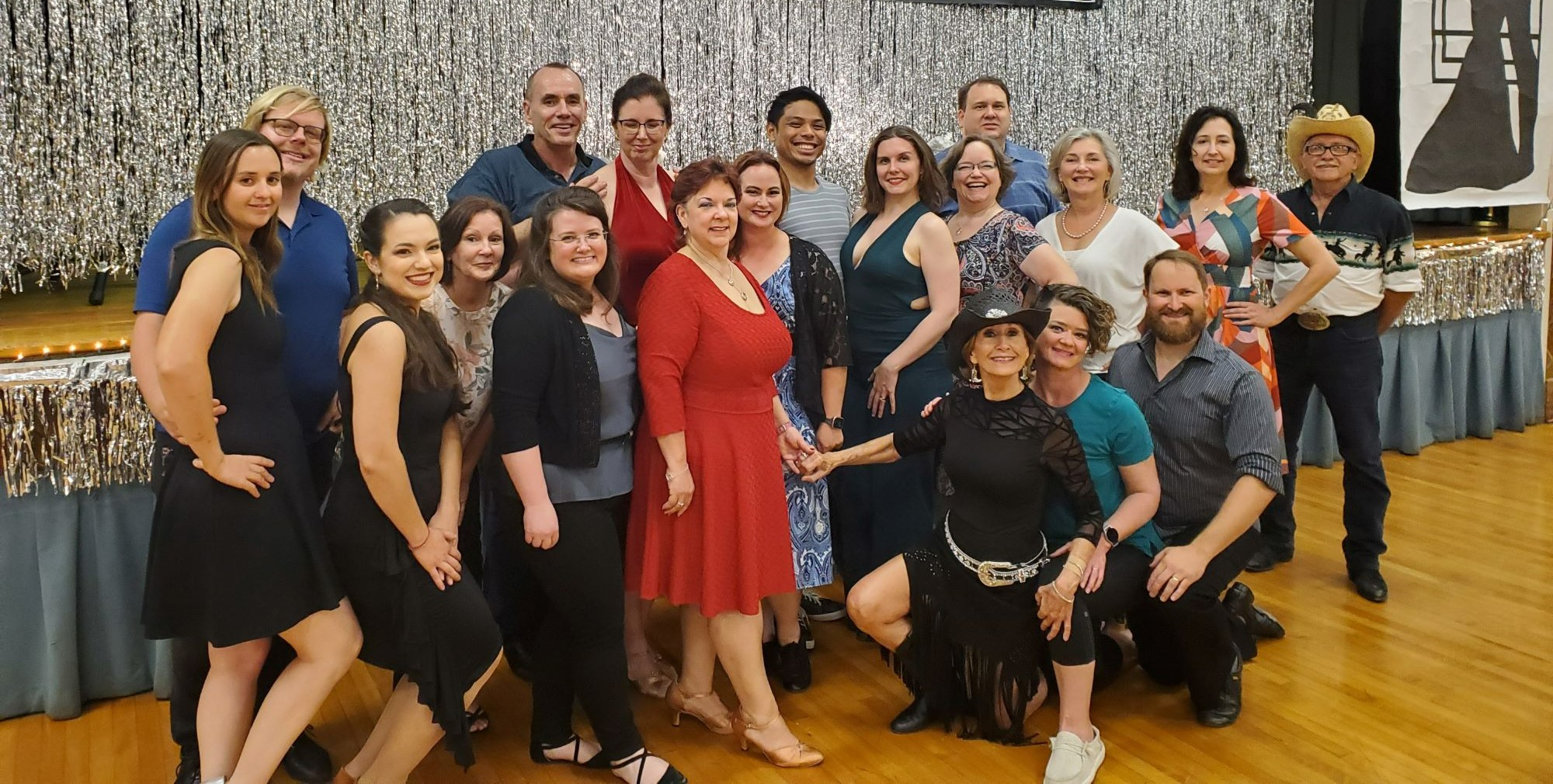Dance is all about connection: about the connection between man and woman; connection between lead and follow; connection between what you hear and what you see. We create a visual expression of what we hear; but there is an element that transcends the way we relate to the music and hits home with how we relate to each other.
Partner dancing mirrors real life relationships in this way: communication must be clear to stay on the same page and create something beautiful.
Regardless of the dance style, foxtrot, rumba, tango, or prom sway, connection is key.
One of my favorite ways to introduce connection in the beginning is to have the couple face each other and hold hands at waist level, elbows bent about 90 degrees. The guy’s hands are palms up or palms in and the lady’s hands rest on top of the guy’s hands, with slight weight in the wrists. (No T-Rex or begging puppy dog arms)
Locking the arms in place so they only move when the bodies move, each partner creates tone but not to squeeze each other’s hands in the process.
Since guys always start with the left foot and ladies always start with the right foot (after all, ladies are always….) get that foot free and give a quick tap on the ground to make sure it’s free. The other foot does not move from its current position.
In this lead and follow exercise, the guy’s in charge (which is something I like about dancing, though my wife always rolls her eyes as she says it’s only for three minutes at a times).
We are only stepping one of three directions and always returning to center/ neutral between each movement: forward, side, or back.
As the guy steps forward, the lady steps back. As the guy steps back, the lady steps forward. These are natural opposites. As the guy steps to the side, the lady steps in the same direction, mirroring his movement.
The goal is for the guy to step in a direction and have the lady match the movement by feeling.
After a few moments, we up the ante by having the lady close her eyes and repeating the exercise. After the exercise is finished, I always ask whether it was more difficult to lead and follow with the lady’s eyes closed.
It’s interesting to hear the guesses, and it always boils down to this:
It’s easier to lead and follow with the eyes closed. Although it’s uncomfortable to remove your favorite sense (sight), it forces the lady to become hyper vigilant and to the touch, giving her a more responsive follow.
At this point the couple is already moving as one!
Let’s add frame!
